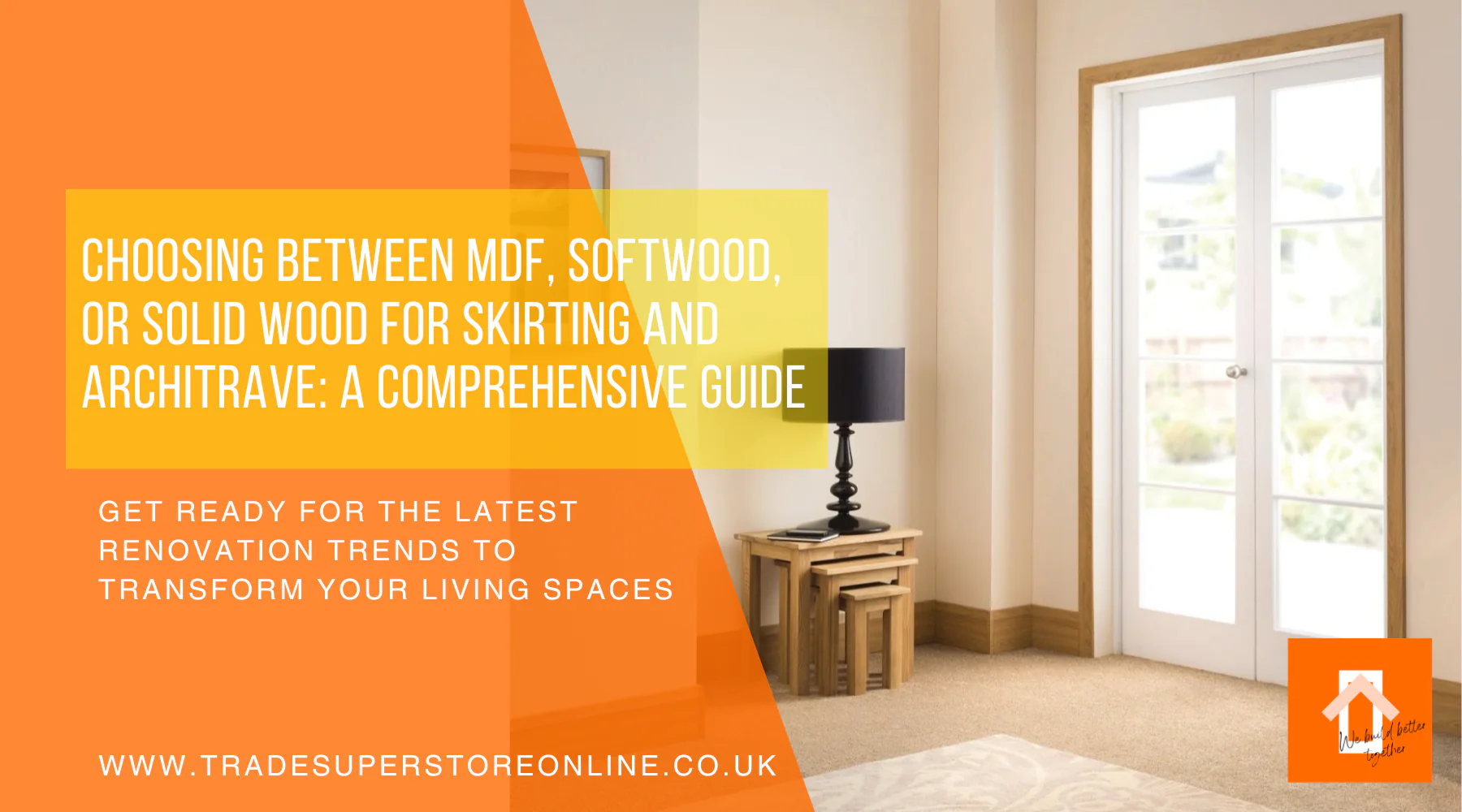
Choosing Between MDF, Softwood, or Solid Wood for Skirting and Architrave: A Comprehensive Guide
When it comes to enhancing the aesthetics of your home, skirting boards and architraves play a crucial role. They not only provide a finishing touch to your interior design but also protect the walls from damage and conceal unsightly gaps. However, with various materials available in the market, such as MDF, softwood, and solid wood, it can be challenging to determine which option is the best fit for your project. In this guide, we'll delve into the characteristics of each material and provide insights into buying skirting boards and architraves for your home improvement needs.
Understanding the Materials:
-
MDF (Medium Density Fiberboard): MDF is a popular choice for skirting boards and architraves due to its affordability and versatility. It's made by compressing wood fibers with resin under high pressure, resulting in a smooth and uniform surface. MDF is easy to work with, making it ideal for intricate designs and molding profiles. However, it's worth noting that MDF is susceptible to moisture and may swell or warp if exposed to water, making it less suitable for areas prone to high humidity or moisture.
-
Softwood: Softwood, such as pine or cedar, is another common material for skirting boards and architraves. It offers natural beauty with visible grain patterns and is relatively lightweight compared to solid wood. Softwood is easy to cut and shape, making it suitable for DIY enthusiasts or those looking for a budget-friendly option. However, like MDF, softwood is prone to moisture damage and requires proper sealing or finishing to prevent warping or decay over time.
-
Solid Wood: Solid wood skirting boards and architraves are prized for their durability and timeless appeal. Typically crafted from hardwoods like oak, walnut, or maple, solid wood exudes elegance and sophistication. It's naturally resistant to moisture and can withstand wear and tear, making it suitable for high-traffic areas. Solid wood may require a higher upfront investment compared to MDF or softwood, but its longevity and aesthetic value make it a worthwhile choice for homeowners seeking long-term quality.

Buying Skirting Boards and Architraves:
When purchasing skirting boards and architraves, consider the following factors:
- Material: Decide whether MDF, softwood, or solid wood best suits your needs based on budget, aesthetics, and durability requirements.
- Dimensions: Measure the height, width, and length required for your project to ensure a proper fit.
- Profile: Choose from a variety of molding profiles and styles to complement your interior design theme.
- Finish: Decide whether you prefer pre-primed, primed, or unfinished boards, depending on your painting preferences.
- Supplier: Purchase from reputable suppliers specializing in building supplies to ensure quality and reliability.

Home Improvement Tips:
- Proper Installation: Follow manufacturer guidelines and best practices for installing skirting boards and architraves to achieve a professional finish.
- Finishing Touches: Apply a coat of paint or stain to enhance the appearance and protect the wood from damage.
- Maintenance: Regularly inspect and clean skirting boards and architraves to prolong their lifespan and maintain their appearance.
- Consultation: If unsure, consult with a professional contractor or interior designer for expert advice and guidance on selecting and installing skirting boards and architraves.
In conclusion, whether you opt for MDF, softwood, or solid wood skirting boards and architraves, each material offers unique benefits and considerations. By understanding the characteristics of each option and following best practices for buying and installation, you can elevate the look of your home while ensuring long-lasting durability and functionality. Happy home improving!
